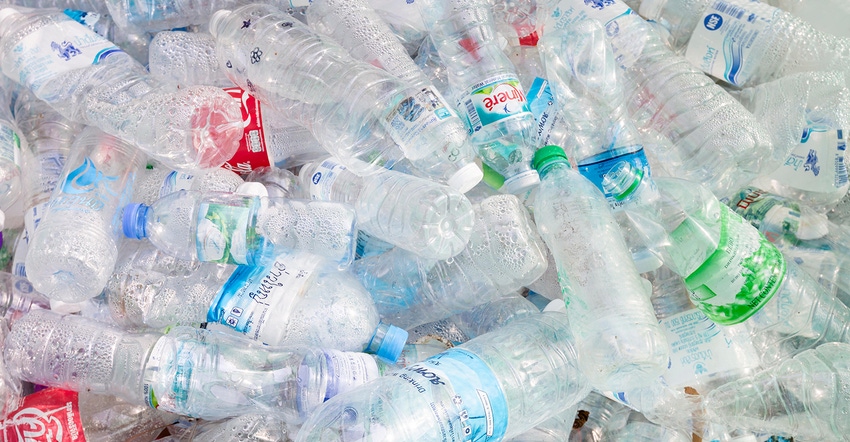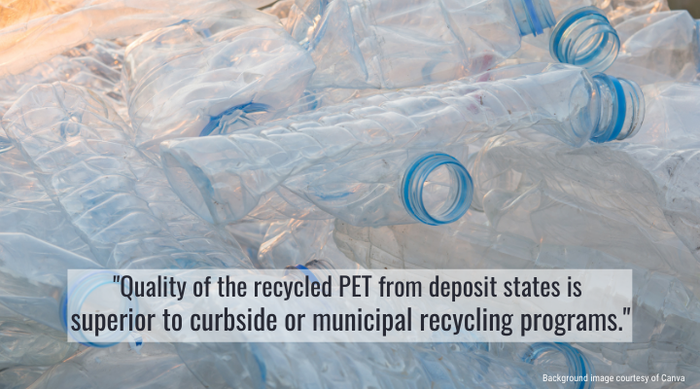Actionable Ways to Minimize PET Recycle Stream Contamination
As efforts continue in using PET bottle recycled content (rPET) for next-generation sustainable packaging, obstacles remain.
January 4, 2022

Recycling has become an inseparable part of the circular economy. Brand owners are committed to aggressive recycled-content goals as well as the desire for their packages to be post-consumer use recyclable. It is undeniable that recycling reduces carbon footprint and eliminates the need for landfill disposal.
With respect to PET, there are significant challenges in obtaining good, clean material to meet those goals. Here are some of the challenges:
Recycling rates in the US continue to be low, significantly under pacing efforts in Europe. Less recycling means lower amounts of materials available to produce next-generation materials.
Consumers do not always comply with local recycling rules.
Brands are working toward making their packaging recyclable, but efforts need to increase, and additional technology inroads need to be made. These challenges can lead to compromised recycled resin quality at a time when the reclaimers are searching more material.

Another part of this equation is how bottles are collected, whether curbside or bottle deposit. The latter requires a bottle to be sold with a refundable deposit. The deposits are redeemable upon return of the bottle to participating retailers. The deposit approach is used in several states and has two benefits for recycling:
Recycling utilization is significantly higher compared to non-deposit states.
Quality of the recycled PET from deposit states is superior to curbside or municipal recycling programs as there are lower levels of contamination as the PET bottles are not mixed with other packaging materials.
In the non-deposit states, single-stream recycling has been gaining favor with the MRFs and consumers. Because it is easy to do, this approach has been shown to increase the likelihood of consumer participation in recycling programs. The downside is the contamination that comes with combining all the packaging materials together. Here are some of the challenges with that approach:
Non-PET packaging materials such as corrugate, HDPE, glass, PP and PVC;
Labels, inks and residual glue and adhesives;
Metals: both ferrous (magnetic) and non-ferrous (aluminum);
Product residues, dirt, and assorted debris;
Coatings (both chemical & plasma deposited);
Non-adhering barrier layers such as ethylene vinyl alcohol (EVOH) and nylon;
Dirt, syrup, wood particles from pallets.
Communities can help improve the outcome by providing consumers with information on how to recycle properly in their community. Brand owners and packaging suppliers can assist by selecting recyclable materials for their packaging and recycle friendly components such as:
Adhesives for labels that separate from PET bottles so that the adhesive can be removed from the waste stream.
Labels made from PET with inks that separate and can be removed in recycling.
Labels made from other polymers that can be separated from PET and float away during recycling.
Label inks that do not separate and redeposit on PET flake.
Cleaning technology also matters. The reclaimer must separate and remove the contaminant to enable a brighter, cleaner appearance of next generation PET bottles. In turn, this allows for higher levels of recycled content to be used.
Dan Durham is the director of technical client services at PTI. He has decades of experience in plastic packaging ranging from design to injection and blow molding processing. Durham is currently focused on helping multinational brand owners successfully navigate packaging projects from concept to commercialization and supporting their sustainability goals.
PTI is a worldwide source for preform and package design, package development, rapid prototyping, pre-production prototyping, and material evaluation engineering for the plastic packaging industry.
About the Author(s)
You May Also Like




